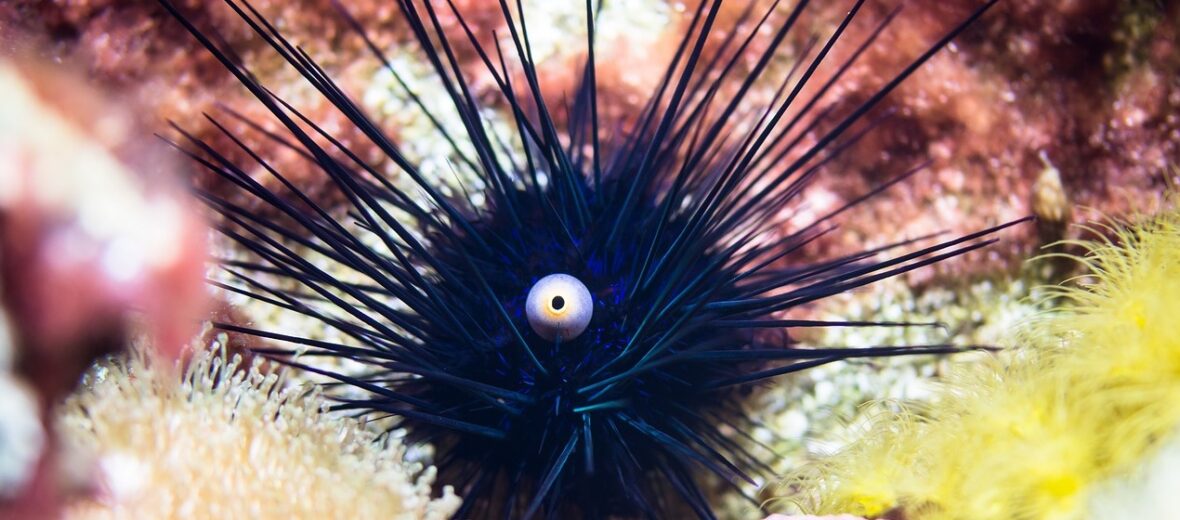
The sea urchin is an easily recognized sea creature that lives around ocean areas with plenty of algae and sea plants. Urchins belong to a group of animals called echinoderms. There are 1,000 known species of sea urchin distributed throughout the world’s oceans. They are surrounded by a bony outer skeleton called a test. Most sea urchins have 5 calcium carbonate teeth that can cut through steel and a tongue-like structure called Aristotle’s Lantern. The sand dollar is another type of urchin.
First the Stats…
Scientific name: Echinodermata
Weight: Up to 1 lb.
Length: Up to 14 inches in diameter
Lifespan: Up to 30 years
Now on to the Facts!
1.) They have sharp spines and claw-shaped structures called pedicellaria that are used to protect them from predators.
2.) Urchins have 5 sets of tube-like legs that they use to move across the ocean floor.
3.) The flower urchin is a venomous species that has a peculiar communal relationship with clownfish. The clownfish slowly adapts to the urchin’s paralytic venom and then they feed off the parasites that hurt the urchin, while the urchin provides protection for the clownfish.
4.) Sea urchins primarily eat algae found on corals, rocks, and sea weed, but they also feast on decomposing matter from fish and mussels.
5.) Sea otters, lobsters, crabs, triggerfish, and wolf eels hunt urchins.
But wait, there’s more on the sea urchin!
6.) Urchins are a delicacy in some cultures and are mass caught to satisfy this human craving.
7.) Kelp is one of their favorite foods. A large group of urchins can lay waste to a kelp forest by eating the bases of the kelp, where they anchor to the sea floor. This causes the kelp to float to the surface and ultimately drift to nearby beaches.
Did you know…?
The red sea urchin has the longest lifespan. It can survive up to 200 years!
8.) Sea urchins have claw-like structures, called pedicellariae, on the surface of the body, scattered among the spines. Their main purpose is to provide protection against predators. They are also used for food collection and to aid in the removal of the objects attached to the body.
9.) Reproduction takes place in spring. Females release up to 1,000 eggs at a time. Males produce free floating sperm.
10.) These eggs are fertilized and then develop into embryos. The embryos then drift to the sea floor and eventually develop hard shells and spines.
Now a Short Sea Urchin Video!
Also, check out the Critter Science YouTube channel. Videos added frequently!
Want to suggest a critter for me to write about? Let me know here.



